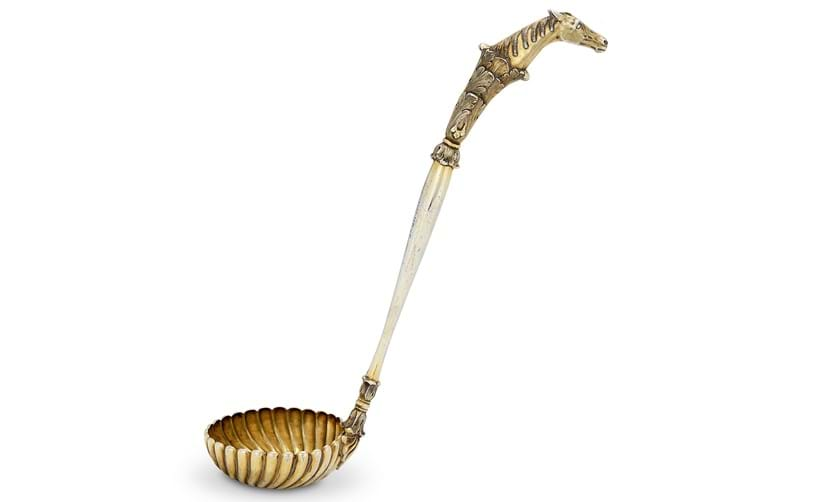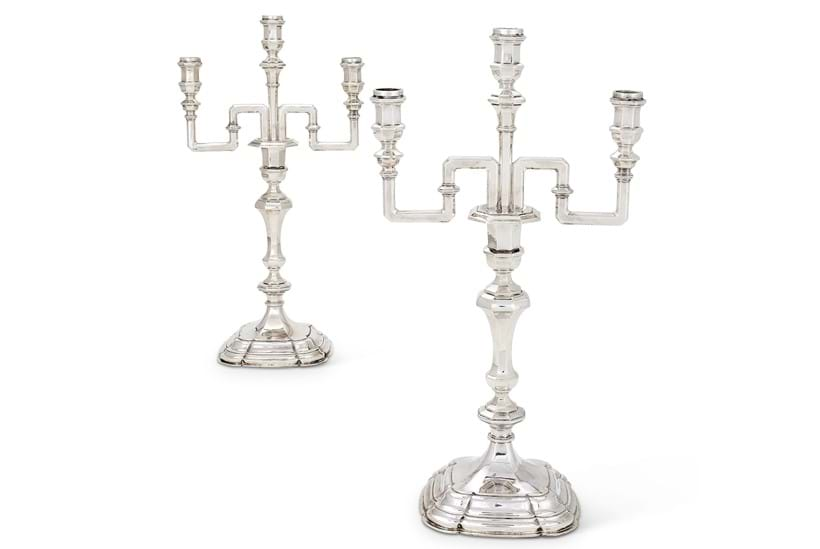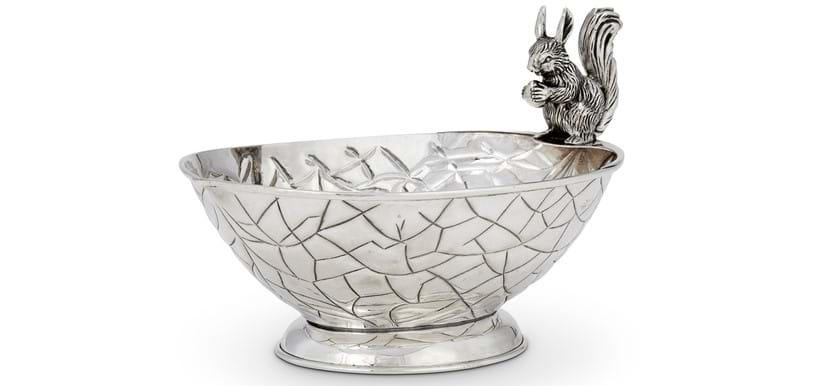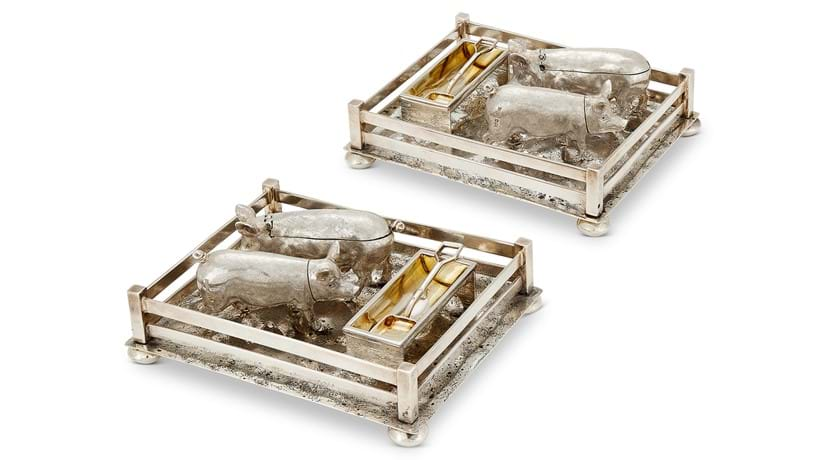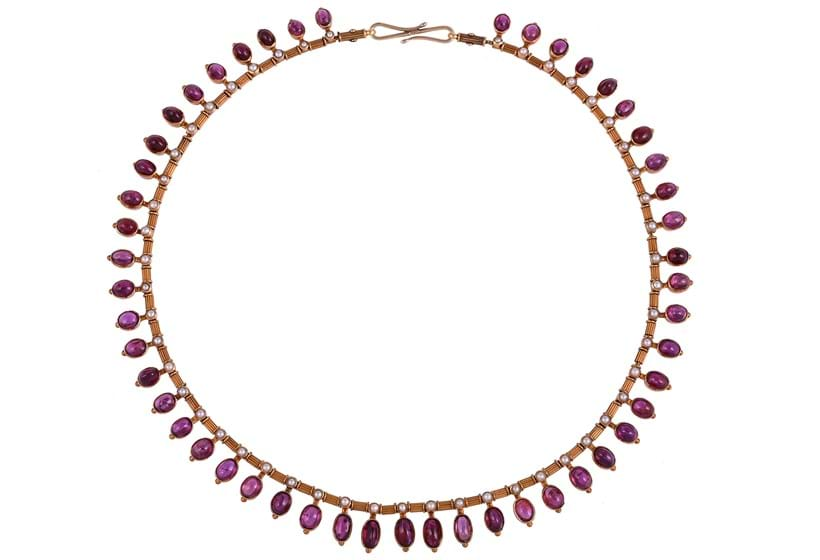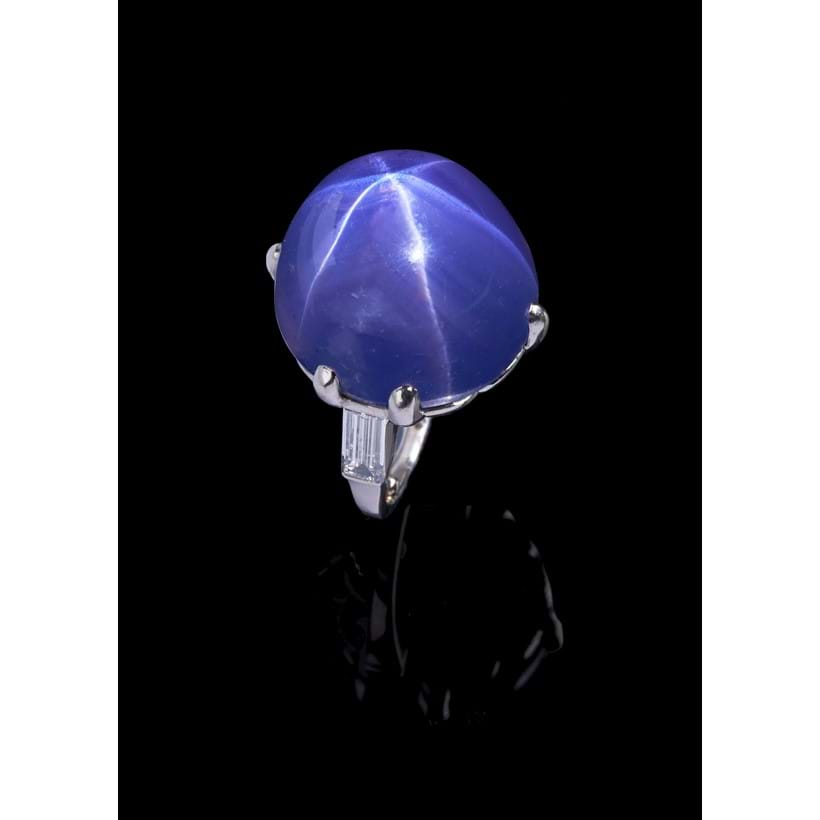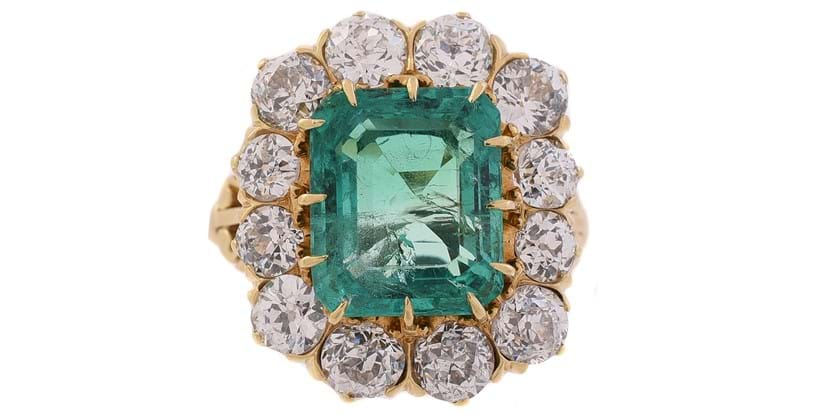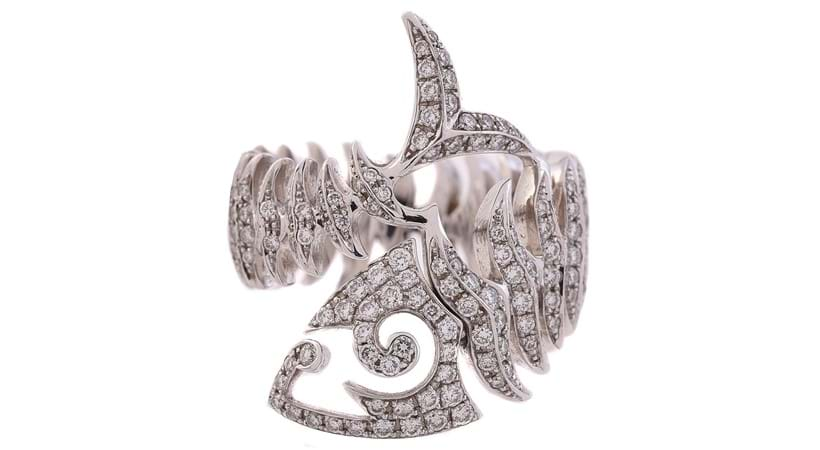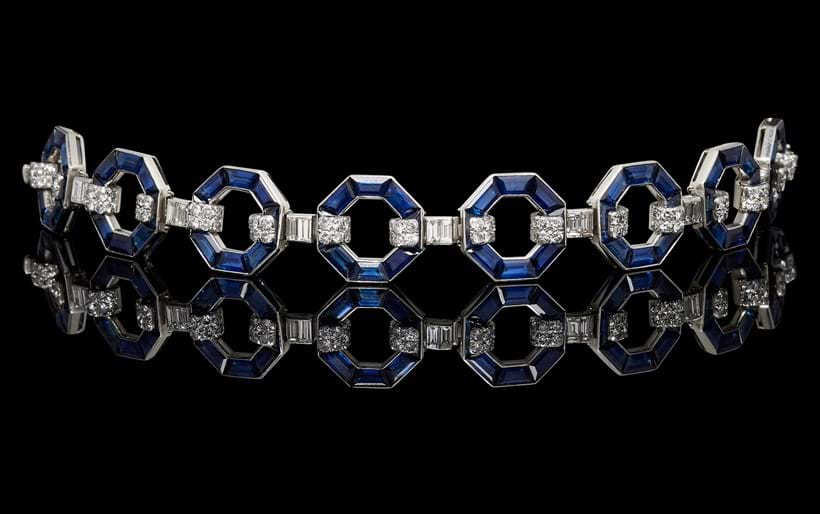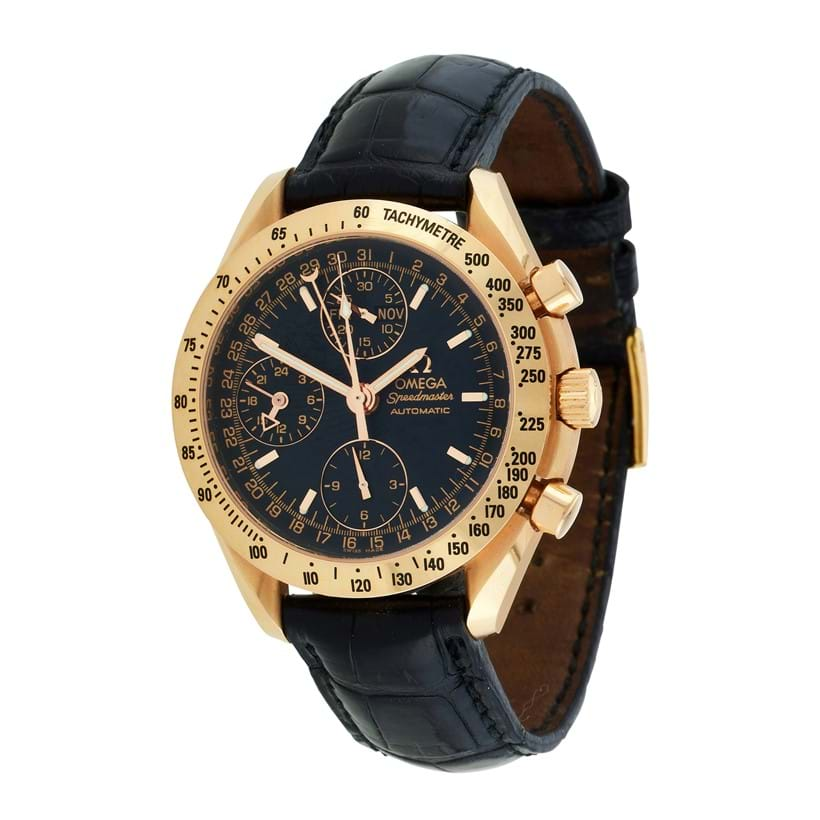Jonathan Pratt's Top Picks | Fine Jewellery, Silver, Watches and Objects of Vertu | 23 November 2022
Coming up on 23 November, we have our Fine Jewellery, Silver, Watches and Objects of Vertu. Ahead of the auction, Dreweatts Managing Director, Jonathan Pratt takes a look at the auction and picks out just a few of his favourite pieces.
There have been many auction highlights at Dreweatts this year including the Chinese Qianlong vase which we sold for £1,449,000 in May; the Henry Moore sculpture that made £400,000 in March; the magnificent oil of Petra by David Bomberg which sold for just shy of £0.5m; as well as a number of fantastic house sales and private collections which offered wonderful provenance and bidders the chance to own a bit of history. All these discoveries took their respective experts time to research and prepare for auction before the items could achieve their newsworthy results. However there are wonderful objects in all our sales and the Dreweatts team take great pride in finding them and making every lot feel like a treasure to be discovered.
As a general valuer, most of my career has been spent working with furniture and paintings from London houses to country farms and seaside bungalows. I was very fortunate in the late 1990’s to be encouraged by my employer at the time to study a Gemmology diploma; the science of gemstones. This new skill brought together art, science and history and complimented many of the subjects I had already studied.
Our auction of Fine Jewellery, Silver, Watches and Objects of Vertu sale on 23 November certainly doesn’t disappoint, so it is a great pleasure to pick my favourite pieces from the collection.
No. 1
Lot 20: A William IV Scottish silver gilt ladle, James McKay, Edinburgh 1833 | Est. £700-1,000 (+ fees)
"When I first saw this I absolutely loved it. It has all the ingredients that make for an exciting lot at auction. It is wonderfully crafted and lovely to handle with an abundance of detail and a gilt finish, and Scottish silversmiths are very collectible. I started my career in Edinburgh so I have a soft spot for Scotland and many memories working as an auction porter in George Street."
No. 2
Lot 31: A pair of Continental silver three light candelabra, stamped 13 | Est. £400-600 (+ fees)
"You see many candlesticks at auction in a wide variety of shapes, materials and age. These caught my attention due to their odd branches which are like gas pipes. Gas light preceded electricity in streets and homes. Perhaps this is a reference to the replacement of candles by gaslight in the 19th century using a proto Art Deco form."
No. 3
Lot 47: An Armenian silver squirrel bowl, Baruyr, early 20th century | Est. £300-500 (+ fees)
"One of the wonderful things about auctions is that we sell objects from all over the world. This Armenian bowl caught my wife’s attention. I always find it beneficial to consult your partner when looking at things for the home! It is a simple bowl with a charming handle modelled as a squirrel. It is a useful size and perfect for putting your nuts in at Christmas."
No. 4
Lot 51: A pair of silver novelty pig cruet sets, C. F. Hancock & Co., London 1990 | Est. £1,000-2,000 (+ fees)
"There seems to be a theme in my selections so far but I love novelty. Novelty and humour can be found in silverwares throughout the centuries such as a Victorian vinaigrette modelled as a flat fish or a cocktail shaker modelled as an elephant. Modern uses for silver have changed and predominately centre around the desk, dressing table or dining table. These two cruets are relatively modern but great fun. An ideal gift for a country person and guaranteed to get people talking at the dinner table."
No. 5
Lot 77: Carlo & Arthur Guilliano, a gold, ruby and seed pearl necklace, circa 1900 | Est. £4,000-6,000 (+ fees)
"This pretty fringe necklace sums up much of what I love about antique jewellery. It uses carefully selected stones with contrasting seed pearls on a beautifully made rich gold chain. The Giulliano name has been associated with fine jewellery in London since 1860 when the father Carlo moved from Rome. The two sons carried on their father’s legacy with fine designs and craftsmanship stylistically more in keeping with the fashions of the late 19th century up until the start of the First World War."
No. 6
Lot 163: Military Interest: A ruby and diamond lancers regimental brooch, circa 1965 | Est. £400-600 (+ fees)
"The Royal Lancers have probably the most recognisable cap badge and motto of all the military regiments. Known as the "Death Or Glory Boys", they were a Cavalry Regiment with famous campaigns in North Africa and Italy during WW2. However viewed in the context of modern fashion it has a real rock and roll feel."

No. 7
Lot 172: A mid 20th century star sapphire dress ring, Madagascar, no heat | Est. £15,000-20,000 (+ fees)
"Here we have a sapphire ring. It might not be common knowledge but both sapphire and ruby stones are the same chemical composition and naturally colourless, aluminium oxide (corundum), and the presence of different elements in their crystal growth changes their colour. This particular stone has a rare natural feature called asterism that is observable as a six pointed star when a light is shone on it. The star exposes the hexagonal crystal structure of corrundum where prismatic inclusions have grown within the crystal and intersect to create a star. This is a particularly large stone of good colour. Incidentally ‘no heat’ refers to the process used to enhance the asterism, confirming this is a natural stone. It’s a bit bling but I love it."
No. 8
Lot 219: An emerald and diamond cluster ring | Est. £2,000-3,000 (+ fees)
"It always amazes me how nature creates such beautiful gems. Emerald is a beryl, the family of stones that includes Aquamarine and Heliodor. It is a naturally colourless mineral and is formed through volcanic activity when rare elements found at different depths in the earth are mixed together. When chromium is present the crystal turns green. So the probability of all the ingredients combining is particularly rare. Surround it with white and bright diamonds and you create this lovely ring ready to surprise your loved one."
No. 9
Lot 289: Elizabeth Gage, an 18 carat gold and diamond ring, London 1993 | Est. £700-1,000 (+ fees)
"Elizabeth’s rings are supremely comfortable and well made. Her first commission was in 1968 for Cartier after which she won many awards. Her eye for design and colour is unquestionable and I had the great pleasure of meeting and working with Elizabeth last year when I was invited to value items in her country home. Elizabeth borrowed elements from Etruscan and Hellenistic jewellery in her designs and in turn created her unique style. I will at some point have to buy a piece for my wife’s collection."
No. 10
Lot 339: Stephen Webster, Jules Verne, Topkat, a fish skeleton ring | Est. £600-800 (+ fees)
"Stephen Webster is a great modern luxury jewellery designer. My first impression was 'This is a very cool ring'. I often ask my wife to pick lots in the catalogue she likes and she chose this one. Amazingly I had already marked this lot as one to look at. I should say that it is important to note the ring size if you are buying rings as a gift. Ring shanks can be stretched easier than reduced, but gemset bands are very difficult to resize without damaging the settings. Ask the experts in the department as many questions as you like, we are here to help and we can even supply a box."
No. 11
Lot 342: A mid 18th century carved agate scent bottle, circa 1760, probably English | Est. £2,500-3,500 (+ fees)
"Pets, particularly dogs, have been a part of domestic life for centuries perhaps longer. As a dog lover (I have two) I couldn’t resist this charming carved agate scent bottle from the mid 18th century, 100 years before Faberge. The inscription ‘Toujours Fidele’ (Always Faithful) reminds us of the love that we have shared with our pets for generations. Kept as an object of vertu it will be enjoyable for years to come."
No. 12
Lot 387: A 1930s French platinum, sapphire and diamond bracelet | Est. £15,000-20,000 (+ fees)
No. 13
Lot 424: Y Omega, Speedmaster, ref. 1750084, an 18 carat gold chonograph calendar wrist watch, no. 5785519, circa 1995 | Est. £2,500-3,500 (+ fees)
"The Omega Speedmaster gets its name from its original design as a sport and racing chronograph. It appeared on the market in 1957, six years before the Rolex Daytona. Better known as the first watch worn in space in ‘62 and in the first Space walk in ‘65 (obviously manual winding rather than automatic movement), the Speedmaster still seems good value when compared to examples by Rolex. They are also considered to be better timekeepers. I’m a fan."
View page turning catalogue
Auction Details
Wednesday 23 November | 10.30am GMT
Donnington Priory, Newbury, Berkshire RG14 2JE
VIEWING:
- Viewing in London (highlights only)
- Tuesday 15 November: 10am-4pm
- Wednesday 16 November: 10am-4pm
- Viewing in Newbury (full sale):
- Sunday 20 November: 10am-3pm
- Monday 21 November: 10am-4pm
- Tuesday 22 November: 10am-4pm
- Day of sale: no viewing
- Remote Viewing | From Sunday 20 November | Learn more










